A Glossary of the Top 43 Marketing Terms
If you're looking for some of the most important marketing terms right now look no further than our glossary.
For those of us who work in the digital marketing industry and speak the language, it's sometimes easy to forget how complex the terminology we use is.
In this post, we're going to breakdown some common yet often misunderstood digital marketing terms. Let's jump in!
Glossary Table
1 - 7. A/B Testing - Buyer Persona
8 - 20. Call-To-Actio
n - Dynamic Website
21 - 27. Exit Rate - Keyword
28 - 34. Landing Page - Paid Traffic
35 - 43. Responsive Web Design - Website Speed
1 - 7: A/B Testing - Buyer Persona
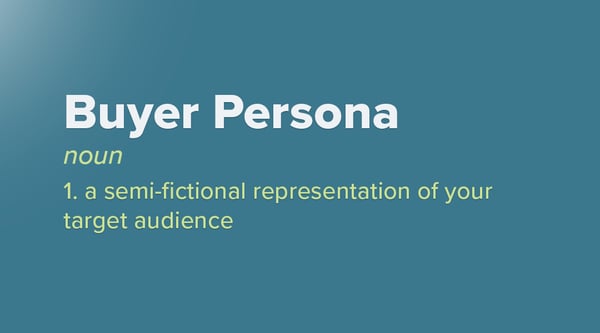
A/B Testing
Sometimes called "split testing", A/B testing involves comparing two versions of a email or webpage after being exposed to a small sample size of prospects to see which performs better. This is usually done to test variables, such as a subject line or form placement on a page. Whichever of the two versions performs better becomes the final version. In the case of an email, the "winner" is then sent out to the full email list.
Above The Fold
Above the fold refers to what a user sees on a webpage before they have to scroll down any further. It is best practice that all pertinent information be visible above the fold so that the user understands the purpose of the page, therefore being encouraged to scroll further.
Alt Text
Alt text is an element of web design used to allow search engines to "read" images on a page, aiding on-page SEO. The alt text will also appear if the image is unable to load for whatever reason; what you put as alt text should serve as a written description of the image.
Attribution
In the world of digital marketing, attribution refers to how credit is distributed for a conversion. Different attribution models exist, some argue the first or last point of contact before the conversion should receive all credit, while others believe in a more holistic and comprehensive view of the path-to-conversion.
Browser
An internet browser is the application on your computer, phone, or tablet that allows you to access the world wide web. A few of 2020's most popular web browsers include: Google Chrome, Mozilla Firefox, and Microsoft Edge.
Bounce Rate
A bounce rate refers to the percentage of single page visits. In email marketing, bounce rate refers to emails who were either entered incorrectly, or that had some other email server error that did not allow the email to be delivered.
Buyer Persona
A buyer persona is a semi-fictional representation of your target audience constructed from market research, used to drive your marketing decisions and ensure that everyone on your marketing team is on the same page. If you're looking to learn a little bit more about buyer personas and develop your own, HubSpot has an awesome free tool you can use.
8 - 20: Call-To-Action - Dynamic Website
Call-To-Action (CTA)
A call-to-action is a command directed at your content's audience designed to elicit a response. This is the point at which you encourage a prospect to take the next step in the buyer's journey. Common CTA examples are "Call Now" or "Learn More".
Click Through Rate (CTR)
A common performance metric, click through rate is simply the percentage of people who click on your ad after seeing your ad.
Content Management System (CMS)
A CMS is a dynamic system that is used to manage content for a website. Its primary function is to allow multiple users the ability to create, present, and edit information on your website. Some commonly explored CMS options are WordPress, Drupal, and even HubSpot.
Conversion
A conversion is the point at which a prospect upgrades to a qualified lead or customer. Conversion is commonly used when analyzing contacts who completed a CTA, such as a site visitor submitting a web form.
Cookie
Sometimes referred to as an HTTP Cookie or Internet Cookie, a cookie is a tiny text files that is stored on your internet browser when you visit and use a website. Cookies contain a unique identifier called a cookie ID, which allows websites to recognize each individual browser. Cookies allow for many basic website features to function.
The primary reasons cookies are used is to improve user experience, to track and analyze user behavior, and to improve advertising and marketing efforts.
You may have noticed many sites recently asking you to accept or consent to the use of cookies. This is due to new personal data and online privacy laws, most of which have been implemented by the European Union.
Copy
The physical text on a website, social post, or any marketing material, is referred to as copy.
Cost Per Click (CPC)
Cost Per Click a performance metric referring to the price advertisers pay for each time an ad gets clicked in a marketing campaign, and is commonly referenced in search advertising. Apart from a performance metric, CPC can also be defined as the billing model publishers use to charge advertisers. In this sense, CPC is synonymous with Pay-Per-Click (PPC).
Customer Relationship Management (CRM)
A Customer Relationship Management software, or CRM, is software that helps sales, marketing, and administration keep track of their contacts, their contacts' information, as well as any and all interaction they've had with their contacts. Two examples of popular CRMs are Salesforce and HubSpot.
CSS
CSS stands for Cascading Style Sheets. CSS is a type of programming language used in web design for styling purposes.
Domain
A domain is the physical website URL. Trailblaze Marketing's domain, for example, is trailblaze.marketing.
Display Ads
Display ads are image based advertisements on the web. These are the third-party advertisements you'll usually see on the top, bottom, or sidebar of a webpage. These ads can also videos, GIFs, or even HTML based, opposed to just a static image.
DNS Registrar
Domain Name System, otherwise known as DNS, is the domain name of a website translated into the IP address so that browsers can interpret them. The Registrar is the DNS provider that hosts the records associated with domain. Common DNS registrars include GoDaddy and Network Solutions.
Dynamic Website
A dynamic website is a database driven website (one that is built in a CMS), in contrast to a static website which is just coded in HTML directly.
21 - 27: Exit Rate - Keyword
Exit Rate
The exit rate is a performance metric for a webpage describing the percentage of visitors who exited the website from that specific webpage after a multi-page session. It is important to note that bounce rate and exit rate are not the same, as bounce rate describes only single page sessions.
Google Analytics
This free website analytics tool is used by over 50% of all websites worldwide. See exactly how visitors are getting to your website, track exactly what they do, and measure their engagement. Install the code on your website and create a free account to get started.
Google My Business
Businesses that operate locally rely heavily on this free Google Business Listing to generate traffic to their website.
For consumers, a Google My Business page is generally the first thing they see in the local map pack when searching for a product or service.
Update your business information, collect reviews, and see how people are finding your business through Google.
HTML
Hypertext Markup Language, commonly known as HTML, is the standardized system of web design coding and styling.
Inbound Marketing
Inbound Marketing is the most effect approach to today's marketing climate. Nonintrusive, inbound methodology creates a positive experience through the use of content marketing. Whereas outbound methodology is the act of seeking customers, inbound takes a softer approach of attracting them to you.
Once interested, you can engage and nurture prospects with helpful, useful content. This causes prospects to appreciate and respect you as the expert in your field. The idea here is that when your prospects are at the stage in the buyer's journey when they are ready to convert, they'll choose you based on their positive impression.
Key Performance Indicator (KPI)
A KPI is a metric used to measure success. KPIs are different depending on the media channel, content type, and even industry. It is important for every brand or company to determine what their KPIs are, and what they will look at to measure the success of their efforts.
Keyword
A keyword is a word that your target audience associates with your product or services, and would likely use to search for them online. There are short tail keywords and long tail keywords - long tail keywords are phrases or multi-word queries. For instance, if someone is looking for a place to get a drink after work, they might type 'beer' into a search engine, or use a long tail approach like 'good places to get a beer'.
28 - 34: Landing Page - Paid Traffic
Landing Page
A landing page is best described as a stand-alone webpage that exists for the sole purpose of promoting, and creating conversions, for a specific campaign. Although, in Google's eyes, a landing page is simply any page that a visitor lands on. Landing pages have highly specific, direct messaging that leads to a call to action.
Local SEO
Local SEO is a type of Search Engine Optimization that involves maximizing organic search visibility for local brick and mortar businesses, or those who do business within local markets.
Local SEO is different than other types of Search Engine Optimization in that it takes into consideration a different set of ranking factors like citation consistency (NAP), reviews, and location proximity.
Map Pack
Google's Map Pack is a section on the local search engine results page that displays a group of businesses (usually 3) when triggered by local search queries. For local SEO, ranking highly in the local map pack is generally a top priority for most businesses.
Minification
Google's Map Pack is a section on the local search engine results page that displays a group of businesses (usually 3) when triggered by local search queries. For local SEO, ranking highly in the local map pack is generally a top priority for most businesses.
NAP
NAP is an acronym for name, address, and phone number. For businesses looking to rank in local search results, it is absolutely imperative for the NAP to be consistent across all web mentions such as directories.
Outbound Marketing
Outbound marketing, or “traditional” marketing, is a marketing approach that seeks to interrupt or obstruct an audience of potential prospects. Outbound marketing includes cold calling and trade shows, as well as un-targeted mass advertising such as TV commercials, billboards, and print ads.
Outbound marketing today is seen as intrusive, and is much more expensive than inbound marketing which has also been proven to yield a higher ROI.
Paid Traffic
Paid traffic consists of site visitors that are generated from paid advertising.
35 - 43: Responsive Web Design - Website Speed
Responsive Web Design
A responsive website adjusts to fit the needs of the device a user is on, whether that be a phone, computer, or tablet. Responsive design uses a fluid grid system that adjusts the size of page elements (usually using percentages, rather than absolute values, like pixels).
At the end of Q2 in 2020, it was found that over 51% of website traffic was generated from mobile devices. This means if your website is NOT responsive, your business is likely missing out on a lot of sales.
Check if your website is responsive using Google's mobile friendly testing tool.
Retargeting
Most websites only have about 2% of traffic convert upon their first visit; retargeting is a type of ad strategy that aims to target that other 98% by placing your ads in front of people who have perviously visited your website.
Search Engine Optimization
SEO, or Search Engine Optimization, is the process of optimizing a webpage or website to maximize its organic (free) traffic through search engines like Google.
This is accomplished using various tactics like content marketing, on-page SEO, link building and off-page SEO, technical website improvements, keyword targeting, user experience optimization, and more.
Use our Website and SEO Audit Service to discover immediate areas for improvement.
SERP
SERP stands for Search Engine Results Pages; these are the pages that appear after a user types a query into a search engine.
Site Administrator(s)
A person or team who manages and maintains the technical operation of a website. The role of a site administrator is synonymous with a webmaster, web architect, web developer, site author, website owner, website coordinator, or website publisher.
SSL Certificate
An SSL certificate encrypt's a user's information (passwords, credit card information, address, etc.) as it is passed from their computer to your website.
This certificate (the lock you see in the top left hand corner of your web browser) prevents hackers' from stealing a user's information, boosts your ranking in Google search results, and significantly increases brand trust.
Get your free SSL certificate here.
Static Website
A static website, or stationary website, is one built without a database. Static websites can only be modified by accessing the HTML source code directly.
Website Plugin or Module
Website plugins or modules are additional extensions that can be added to your CMS to enhance your experience and website functionality. These plugins or modules may provide abilities that the CMS alone can not natively provide.
Here are Hubspot's Best 15 Website Plugins of 2020
Website Speed
How fast your website loads plays a significant role in user experience. In fact, it's estimated that just a 1 second delay in load time can cause a 7% decrease in your website's conversion rate. In addition, the majority of mobile users expect a web page to load within 4 seconds.
Use GTmetrix, a website speed testing tool, to see exactly what you can do to improve your website's speed.

.png?width=80&name=Untitled%20design%20(2).png)
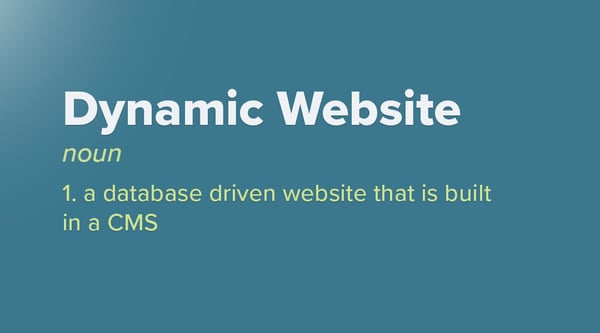
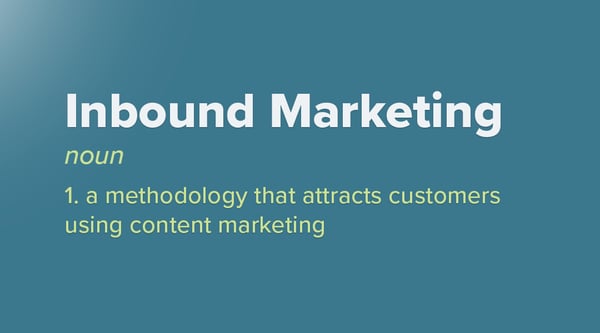
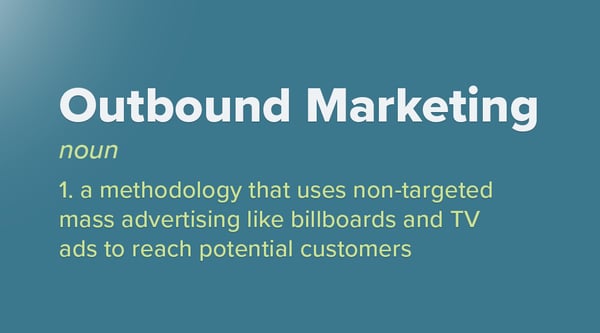
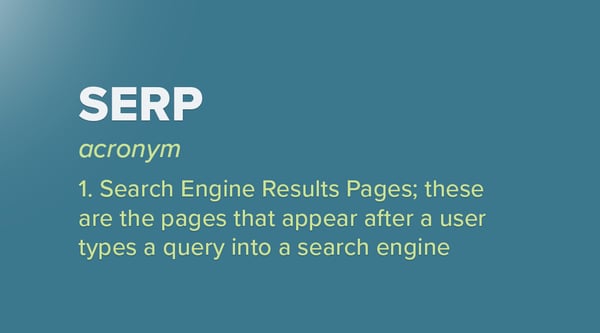
.png?width=630&name=trailblaze%20-%20Blog%20Graphic%20(Text%20Ads).png)




